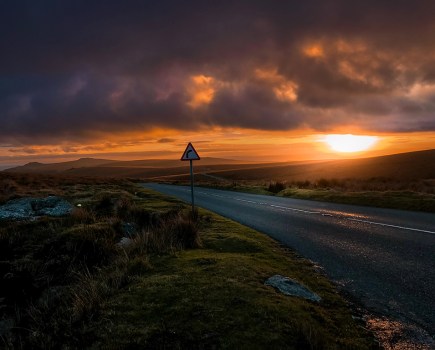Outside the Tin Pan Alley Club in London, 1963, by Terry O’Neill
© Iconic Images/Terry O’Neill
The pop culture of Britain took off in the early 1960s with bands such as the Beatles and the Rolling Stones winning hearts and fans across the world with their style, good looks and self-penned hits. At the same time, a crop of young British photographers – the likes of Bailey, Donovan and Duffy – were also catching the eyes of a worldwide audience with their fresh and inventive celebrity, fashion and music photography.
The marriage of music and imagery was epitomised by the work of photographers such as Terry O’Neill and Gered Mankowitz, both of whom were instrumental in documenting the formative years of the Rolling Stones.
One of Terry O’Neill’s big breaks partly came out of the death of his Daily Sketch colleague Brian Fogarty, who was killed in a plane crash on the way to shoot a celebrity wedding. Terry was asked to take Brian’s job.
Terry recalls what happened next: ‘I walked in there and I said to Len Franklin, who was the Daily Sketch picture editor, “I don’t know what I’m doing here”, and he said, “We think youth is on the rise and is going to change the world. We want you to photograph that”.’
Terry’s first assignment was to photograph the Beatles recording at London’s Abbey Road Studios.
‘They were doing She Loves You, or whatever their first hit was. That image was published and the paper sold out. Then the phone rings and it’s Andrew Loog Oldham, the Rolling Stones’ manager. That’s how I got to take all those images in the book. I started at the top, and I never looked back.’
A musical connection
Terry had a close affinity with music before becoming a photographer.
‘I was a jazz musician, playing professionally at the time,’ he says. ‘I was playing in the American Air Force bases and in London jazz clubs at the weekend. So that’s why the Daily Sketch took me on. They wanted someone young and who could get on with young musicians. I was playing modern jazz, but I loved the blues. I used to go and listen to this group down in Richmond, who were the Rolling Stones, so I knew who they were when I got the phone call. I loved the blues so it was right up my street. In fact, I think their music was better then than it is now.’
A rehearsal for ABC’s Thank Your Lucky Stars TV pop music show, 1964, by Terry O’Neil
© Iconic Images/Terry O’Neill
Terry was also very close in age to the Stones. ‘I was a year older than Bill Wyman, so I was the oldest one,’ he says. ‘We all used to go to The Ad Lib Club in London. We used to sit there talking about what we were going to do when all this was over.
‘We were all convinced we’d been given this chance and in a couple of years it would go back to what it was like before, and we’d have to get a proper job. Keith Richards never thought it was going to last and I remember Ringo Starr wanted to open a chain of hairdressers for his old lady. It was so funny.’
Terry recalls: ‘At the time I was shooting 35mm mostly, but I did shoot some stuff on a Rolleiflex. The 35mm was with a Canon 7 rangefinder, with an f/0.95 lens. I loved that camera. It had a trigger handle at the bottom – it was a fab little camera.’
He was mainly shooting in black & white and admits: ‘I always prefer black & white. I did take some early colour. There were lots of pop magazines around in the 1960s, like Rave and Fabulous, and when I used to do the black & whites of the Stones I’d shoot a roll of colour and flog it to them. The market for pictures was incredible.’
Initially, Terry did his own printing, but admits that as his career went on and he started travelling the world, it was a job
he couldn’t continue. ‘I’d use good printers,’ he says. ‘I couldn’t work all day and print all night.’
Shooting and choosing the images
Terry has no idea exactly how many images he shot of the Rolling Stones. ‘I just shot them any time Oldham rang me,’ he says. ‘I shot them maybe 20 times in those two years [from 1963 to 1965]. It was thousands and thousands of images.
‘The Rolling Stones were different from the Beatles. The Stones were five individuals, but with the Beatles you always felt they were one – they were always together, and they spoke and joked around as one. The Stones had their own personalities – that was the difference I found between the two groups.’
So did this individuality help Terry when he was photographing the Rolling Stones? ‘It did in one way because I never really thought I got a great shot of the Beatles, but I did quite like some of the Stones stuff, like when they’re going off to rehearse in the Donmar Studios with all their suitcases. I mean, you didn’t get chances like that with the Beatles. I love those types of pictures. You never see pictures of bands like that any more. It’s all junk now.
‘The Stones had never really been photographed before and to treat them as “top stars” you had to use your imagination, so that’s what happened.
‘I was friendly with Bill [Wyman], Keith [Richards] and Charlie [Watts]. Mick [Jagger] and Brian [Jones] I wasn’t that close to. But there was always respect between us all because I was really something. I was a young kid who could get people’s pictures in the newspaper, and that was really important. It was like getting a TV show of your own.’
Portrait of Mick Jagger in July 1964, by Terry O’Neill
© Iconic Images/Terry O’Neill
Terry admits he often goes through his back catalogue of photographs, as he did when choosing an edit for the Breaking Stones book.
‘It was fabulous to go through them because there are shots you forget,’ he says. ‘I just photographed the Stones as they were – that was my style – so it fitted in great for me.’
He is honest about being in the right place at the right time. ‘I had no idea I was going to end up where I ended up in life,’ adds Terry. ‘It was just fate, really. I can’t believe the first time I photographed the Beatles and the Rolling Stones, and then in 1966 and ’67 I worked with Frank Sinatra. ‘I’ve had an unbelievable career, really. Nobody could have a career like that any more.’
Mankowitz comes on board
The band relax, by Gered Mankowitz
© Bowstir LTD/Gered Mankowitz
The success of Terry O’Neill’s career actually helped to open the door for Gered Mankowitz to shoot the Rolling Stones.
‘When I went to America for the first time, Gered Mankowitz took over with the Stones,’ Terry explains. ‘I did 1963-65, and then he was around and I think he worked with them a lot. That’s how the book came about.’
Gered explains: ‘In 1964 I met [the singer] Marianne Faithfull socially, and immediately wanted to photograph her. She was managed by Andrew Loog Oldham.
‘I photographed her on London’s Wimbledon Common and in the recording studio, but it was the shot of Marianne inside The Salisbury, a pub on St Martin’s Lane in Covent Garden, that got Andrew’s attention. He asked if I would shoot the Stones, who he also managed.’
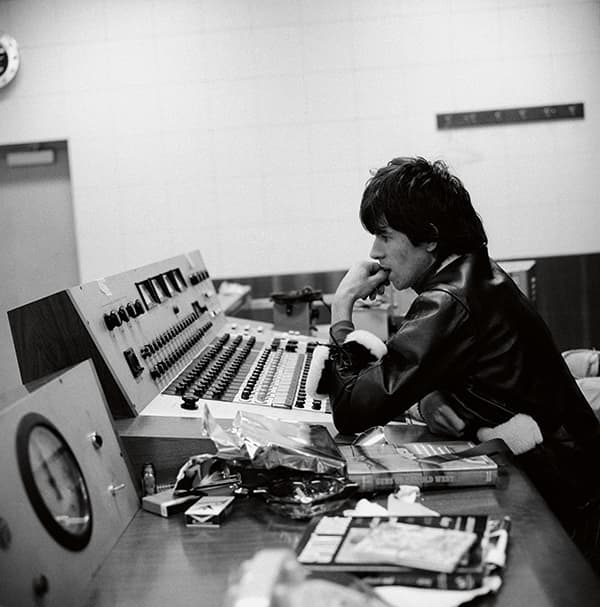
In the studio, by Gered Mankowitz
© Bowstir Ltd/Gered Mankowitz
A meeting was arranged between Gered and the band in late 1964 and a shoot was set up for early 1965 at Gered’s small studio in Mason’s Yard, London.
‘Those first Mason’s Yard shots were used on a tour programme, record covers and the press,’ recalls Gered. ‘I was 18 years old when I first started shooting with the band, and although I was confident, I wasn’t very sophisticated in my technique. I am delighted with the images, though, and, looking back, believe that in many ways my lack of experience gives the images their particularity and energy.
‘A few months later I got a call from Andrew, asking if I wanted to go to America with the Stones to photograph the tour. I was just bowled over! It was pretty exciting to be asked to go to America; my first trip there. It was the land of our dreams.
‘All I wanted to do was focus on music photography. Music was my world and everyone in it was around my age. Working with the Stones really underscored my focus and gave me opportunities to pursue a rock music photo career.’
Although very excited to get his big break on tour with the Stones, Gered admits: ‘The gigs were so badly lit that it was really difficult to get a good exposure. You have to remember, most of these concert venues were not designed for rock bands. They were sports venues, not theatres, so Mick would often be in the only spotlight and the rest of the band in semi-darkness. That’s why I tried to shoot into the light, just to get something atmospheric.’
Film and camera choices
As for his camera gear, Gered reveals,: ‘I used a Hasselblad 500C from my earliest sessions, and always shot medium format where I could. If I needed to shoot 35mm I used a Nikon F.
‘My favourite Hasselblad lens was the 50mm Distagon, but I used whatever I felt was most suited to the task at hand. My film of choice was [Kodak] Tri-X, but I used Ilford HP5 a lot, as well. I don’t think we had a whole lot of choice when it came to colour – Kodak Ektachrome was my first choice.
‘Back in the 1960s, the bulk of the media dealt in black & white images, and therefore the majority of what I shot was always in black & white, although I usually covered most sessions in colour as well.

Brian and Keith rehearse, by Gered Mankowitz
© Bowstir Ltd/Gered Mankowitz
‘Unfortunately, the original colour transparencies were distributed to the media, used for reproduction and were not returned, so they were lost. The bulk of the black & white negatives were kept in my archive.’
Of the US tour, Gered says that it was, photographically speaking, a frustrating assignment. This was mainly because, by his own admission, he wasn’t technically very confident and on top of that the light was so poor.
‘I’d send over bundles of film to the studio in London for processing and they would send the proofs over to Andrew Loog Oldham,’ says Gered. ‘I got a little feedback, but I didn’t see any of the photographs until I got back.’
For the book, Gered says: ‘I went through thousands of images to come up with a selection that suited the concept of the book. I saw the Stones as being the band I wanted to be part of, and felt completely at one with them.
‘I think my youth contributed in many different ways to the success of my work with the band, and why so many of the images remain important to their history.’
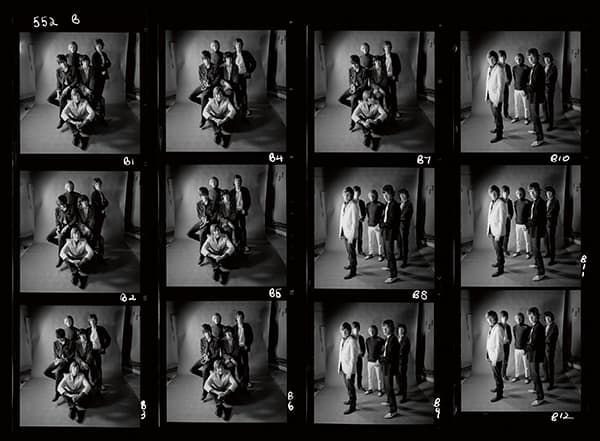
A contact sheet showing a studio shoot with the band, by Gered Mankowitz
Tragedy and album covers
Following the 1963-65 period, Terry O’Neill only shot the Rolling Stones one more time, after the death of the band’s original leader, Brian Jones. Meanwhile, Gered Mankowitz went on to work with the Stones for a few more years, and even shot the covers of several of their albums, including 1967’s Between the Buttons.
For people who are considering buying Breaking Stones, what should they be looking out for in the book and in the pictures?
Terry advises: ‘Just enjoy a world that doesn’t exist any more. The readers will never see a band like the Rolling Stones so exposed – exposed, that’s an interesting word – like they were. They’ll never show that any more. It’s the last of a world where the public will see anything like that.’
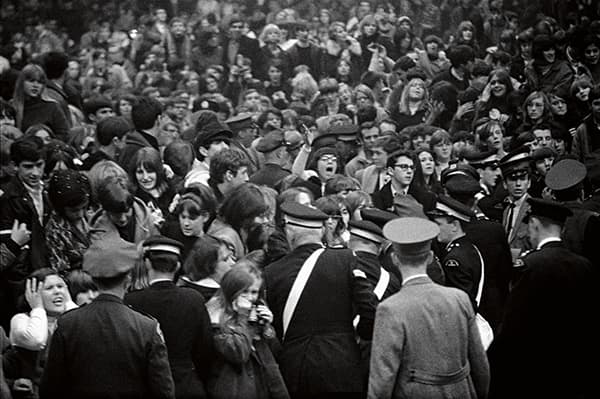
Crowds of fans held back by police, by Gered Mankowitz
© Bowstir Ltd/Gered Mankowitz
Terry O’Neill
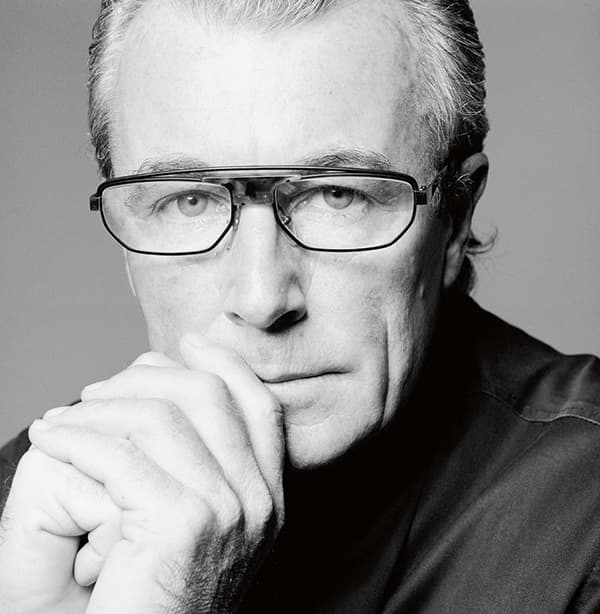
Terry O’Neill
In a career dating back to the early 1960s, Terry O’Neill has shot portraits of many of the world’s most famous rock stars, actors, royals, politicians and personalities.
While working on an airline’s photographic unit, his career took off when his picture of a sleeping politician was published in the Daily Sketch. He moved into newspapers and documented the explosion of youth culture in the 1960s, including the rise of the Beatles and the Rolling Stones. His photographs have been exhibited around the world and now, aged 77, he is still busy working on book and exhibition projects.
To find out more, visit www.iconicimages.net
Gered Mankowitz
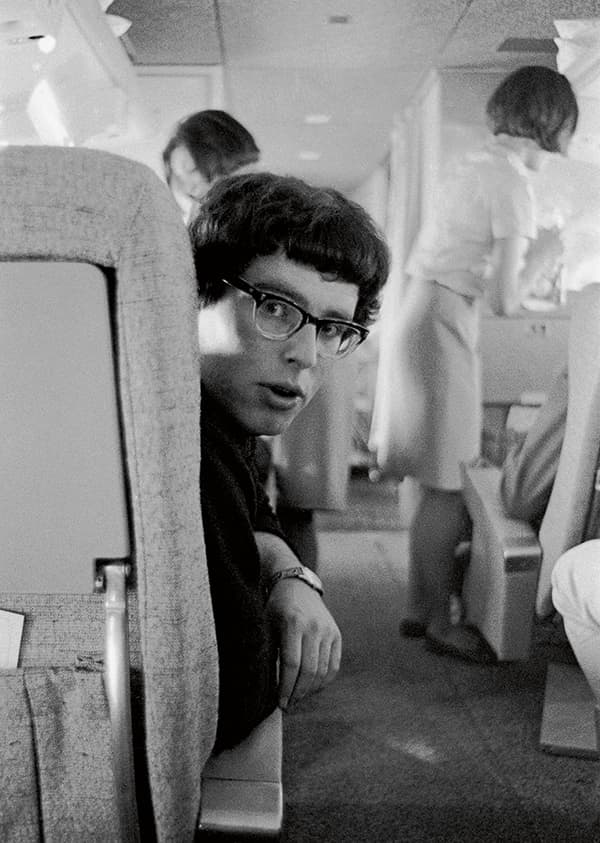
Gered Mankowitz
Gered Mankowitz began his professional career aged 16, shooting architecture in Barbados. He worked with fashion photographer Alec Murray in Paris and with showbiz portraitist Jeff Vickers in London.
One of his shots was used on the cover of singing duo Chad and Jeremy’s album in 1963, and he has since carved out a successful career as a music photographer, photographing artists such as Jimi Hendrix, the Rolling Stones, Elton John, Kate Bush and Duran Duran. He was awarded an Honorary Fellowship of the Royal Photographic Society in 2016 and now spends most of his time working on his archive and personal projects.
To find out more, go to www.mankowitz.com
Breaking Stones: Exclusive Amateur Photographer reader offer

Breaking Stones 1963-1965: A Band on the Brink of Superstardom, by Terry O’Neill & Gered Mankowitz,
is published and distributed by ACC Editions
(ISBN: 978-1-85149-816-1).
The book is usually priced at £29.95, but Amateur Photographer has teamed up with the publisher to offer a special 40% discount on the cover price for readers of the magazine, making the book just £17.97 (plus £4 p&p).
To take advantage of this superb special offer, just go to: www.antiquecollectorsclub.com/uk/store/register and enter the promotional code STONES40 upon purchase.






